Clinical analysis of urine at home on test strips: pros and cons

Today I would like to talk about a lot. And certainly not to turn this post into a review of jars with stripes.
And what are your tools for self-control at home?
In general, we always rather insist: any such thing should be kept at home, even if there are no prerequisites for this. Moreover, not only to store, but also to use systematically. A healthy person at home should have a glucometer, tonometer, scales, test strips for express analysis of urine - this is absolutely normal.
Systematic self-control is a great thing that will preserve health and save money in the long run. You’ll definitely never, for example, once a week to go and take general tests to the clinic, but once a week to pierce your finger in the morning - no problem, once a day in the morning to get on the scales or in the evening to make a measurement with a tonometer - it's easy. Etc.
Everything diagnostic, which is very simple to buy and easy to decrypt, should be at hand at home.
Deciphering the results
This is the strangest part, of course. We have already somehow shown with the example of glucometers how this works. The task of modern "gadgets" basically does not come down to being precise, but to getting into a certain corridor of meanings.
Almost all modern devices have a legalized error, which basically reduces all work to the principle of traffic lights: green (normal) - orange (border value) - red (above), etc. This is an absolutely normal story.
In this sense, urine test strips, for example, are the most harmless and honest: in general, any strips that work on the principle of color change (there are a lot of them) are like that.
You can keep more or less correct data records using only one device all the time. And certainly it makes no sense to double-check one household appliance with another. Otherwise it will be something like this:

Both are accurate
In general, you need to focus on colors, and not on exact numbers, as practice shows. Say, in the picture above, the sugar level is the same, by and large, despite the spread of one and a half units. Of course, there are also such devices where, firstly, accuracy is critical, and secondly that only a specialist can decipher. For example - a home ECG apparatus . But even there, if you remember, a basic decryption at the “plus-minus-traffic light” level can be obtained without leaving your computer:
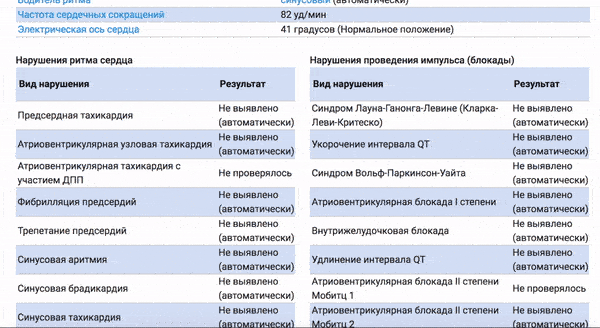
There are almost no such problems with visual test strips
Well, that's for sure - a solid traffic light. In general, many test strips (even those that will be discussed) still provide the ability to identify specific numbers, but many indicators often fit into the “detected / not detected”, “many / few / very many” scale, etc. The task of analysis is to correctly decode the colors - this is the main problem of the visual test.
For some test strips, it is possible to work with special analyzers. These are electronic devices that exclude all subjective errors, correctly recognizing colors. We wrote a review of one such .
But overall, the colors are relatively neutral in contrast.
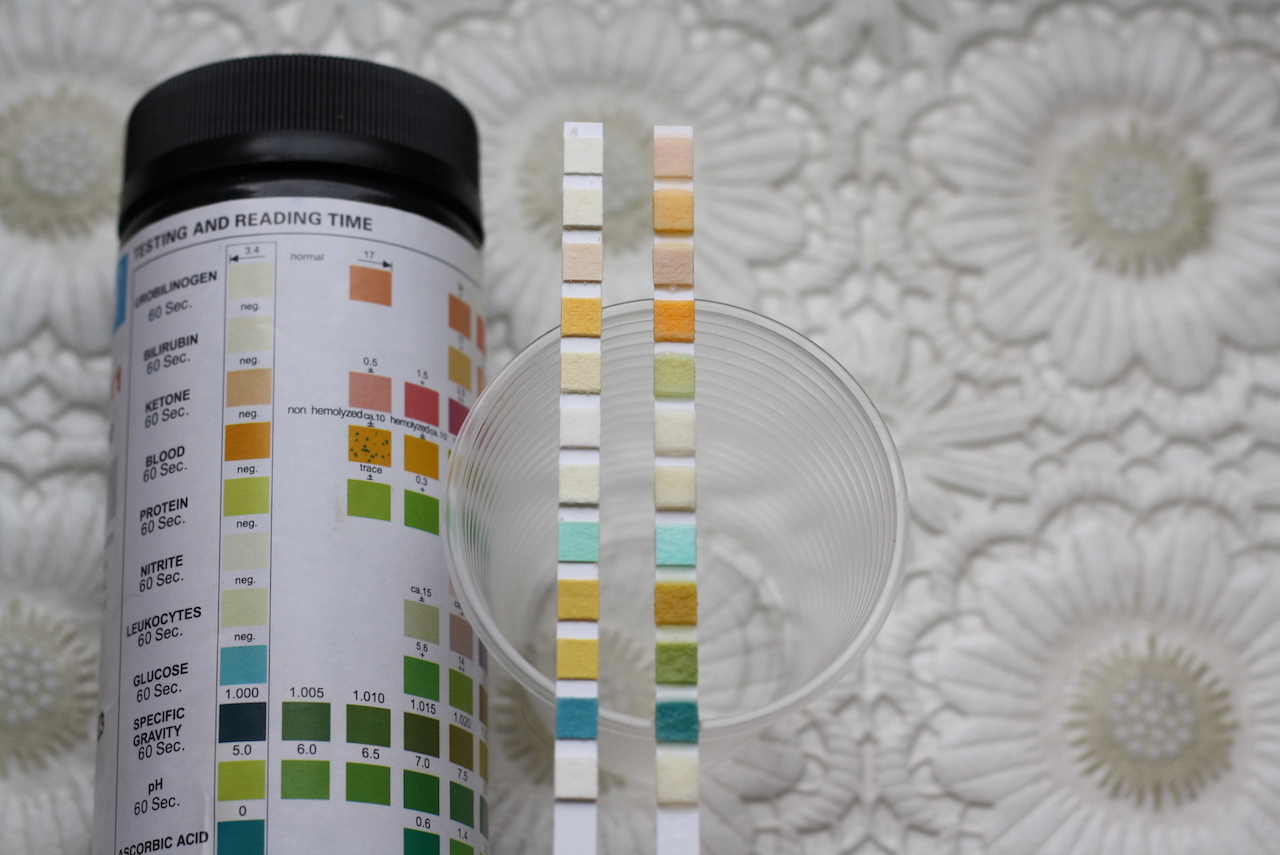
On the left - a clean test strip, on the right - already with the analysis. The
strips are compared with the scale: as a rule, all data can be read immediately from the can. The vast majority of reagent zones in strips of different manufacturers are made the same, so you can navigate by some general table.
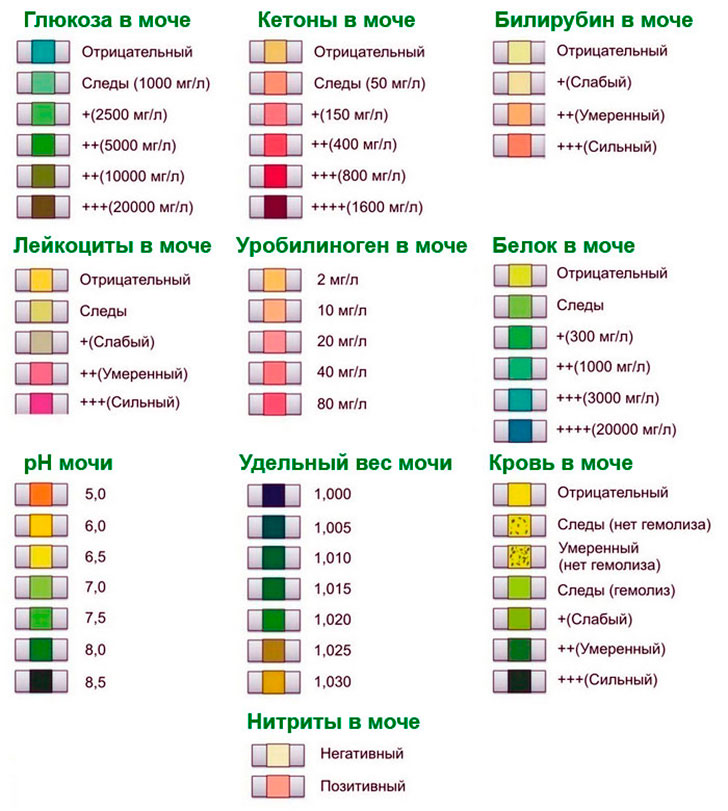
We settled on the DIRUI test strips - for them, the scale looks like this.
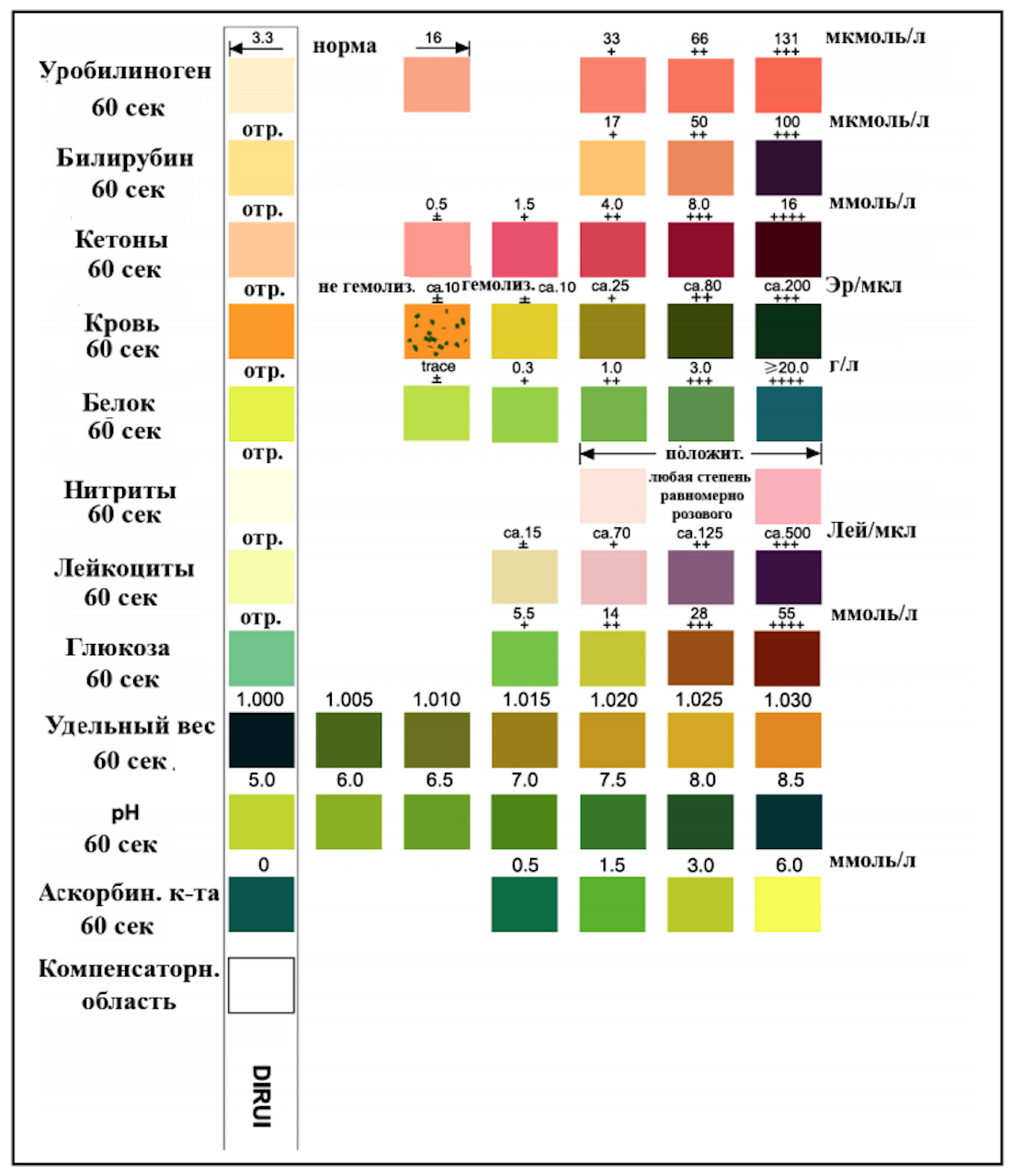
She put on the bank:
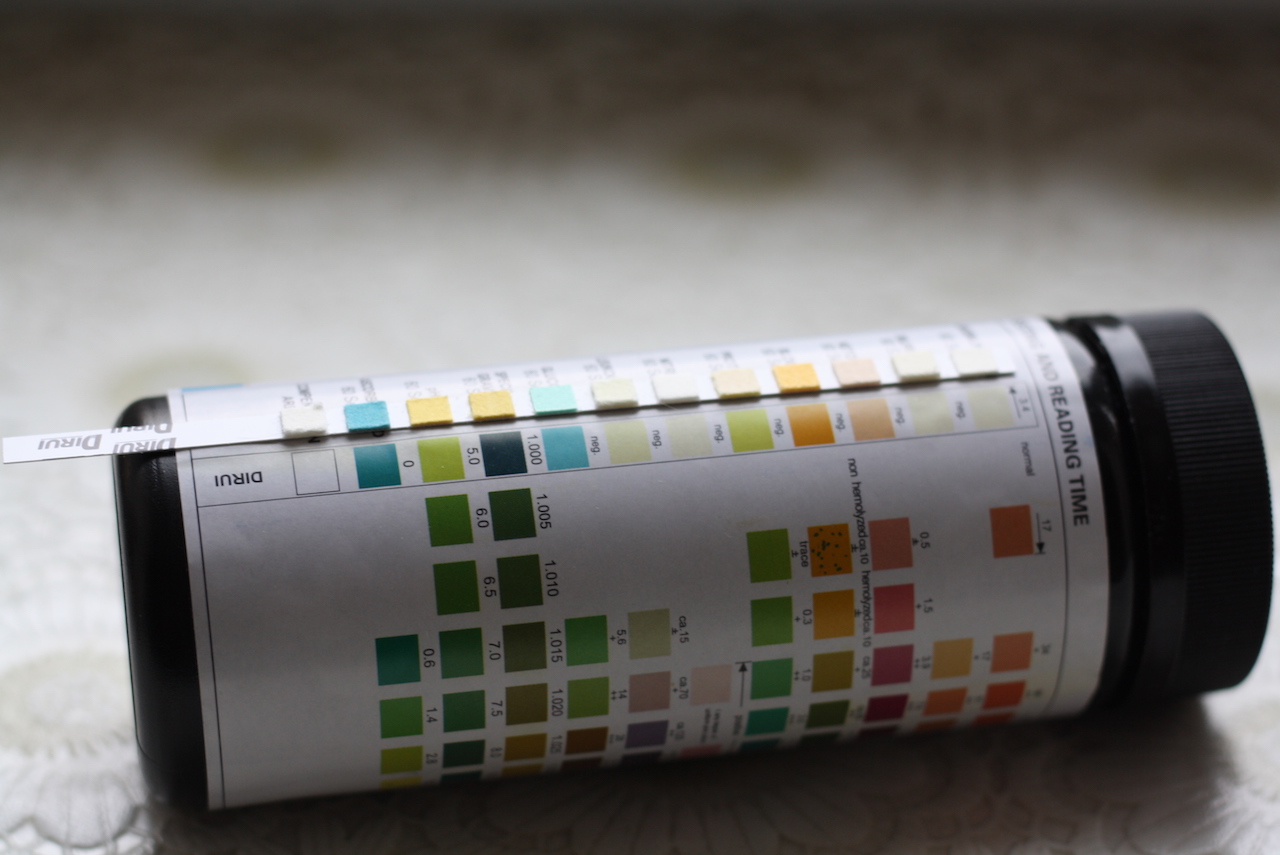
Is the data accurate?
Yes, there are no problems. Moreover, most of the parameters in clinical analysis generally comes down to "detected - not detected." Here, one should rather say the following: test strips are somewhat inferior in information content. The general analysis on the test strips comes down to 11 metrics - in the clinical sheet - there are a little more. Let's compare.
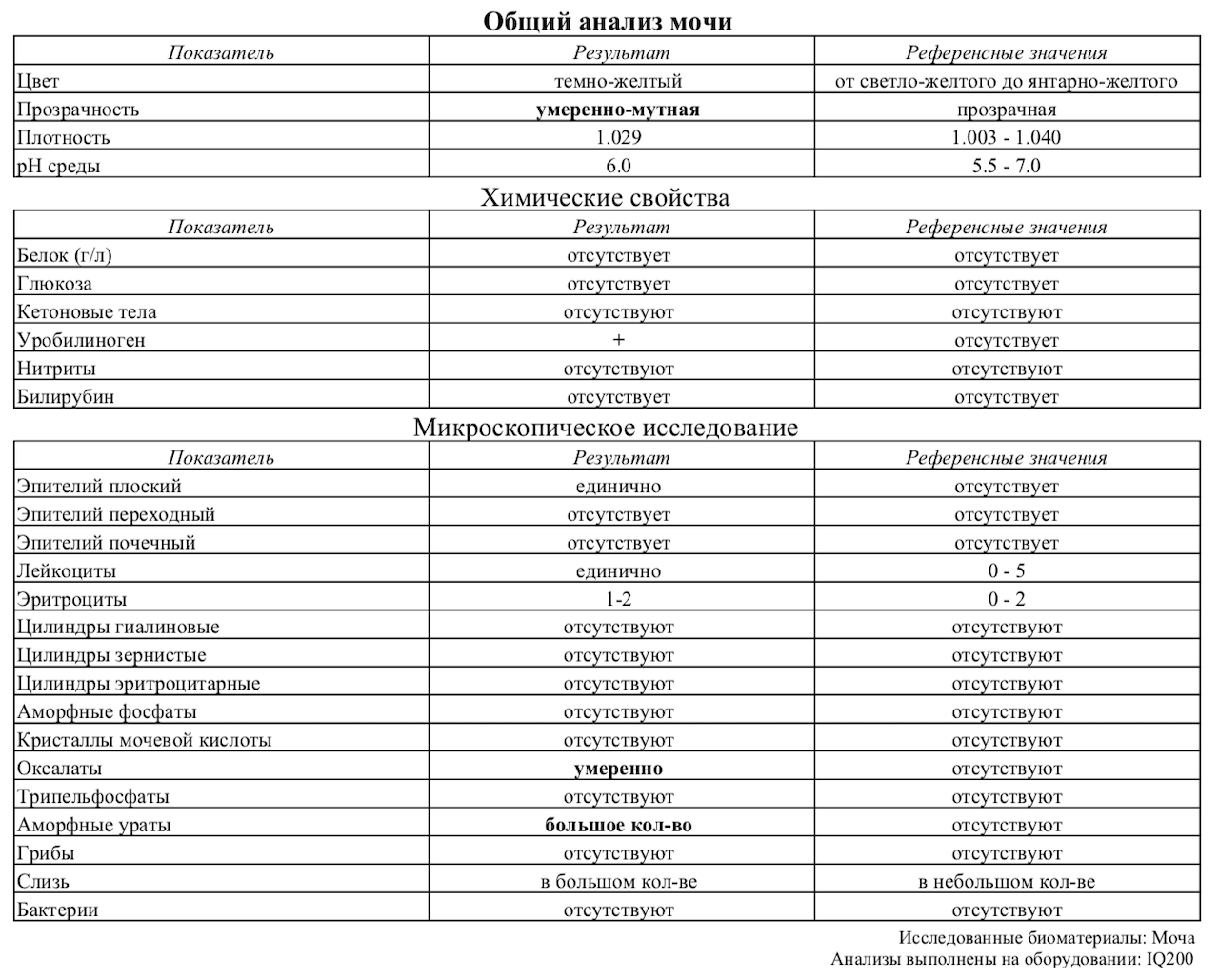
In general, the analysis in the laboratory is carried out in five areas, including biochemical, microscopic, microbiological, etc. It is clear that the data will be a little more complete. Plus, of course, the color and smell of the strip will not give any answer. But basically, the focus is on those very 11 parameters:
- Glucose (GLU)
- Bilirubin (BIL)
- Relative Density (SG)
- pH (PH)
- Ketone bodies (KET)
- Hidden Blood (BLD)
- Protein (PRO)
- Urobilinogen (URO)
- Nitrite (NIT)
- White blood cells (LEU)
- Ascorbic Acid (VC)
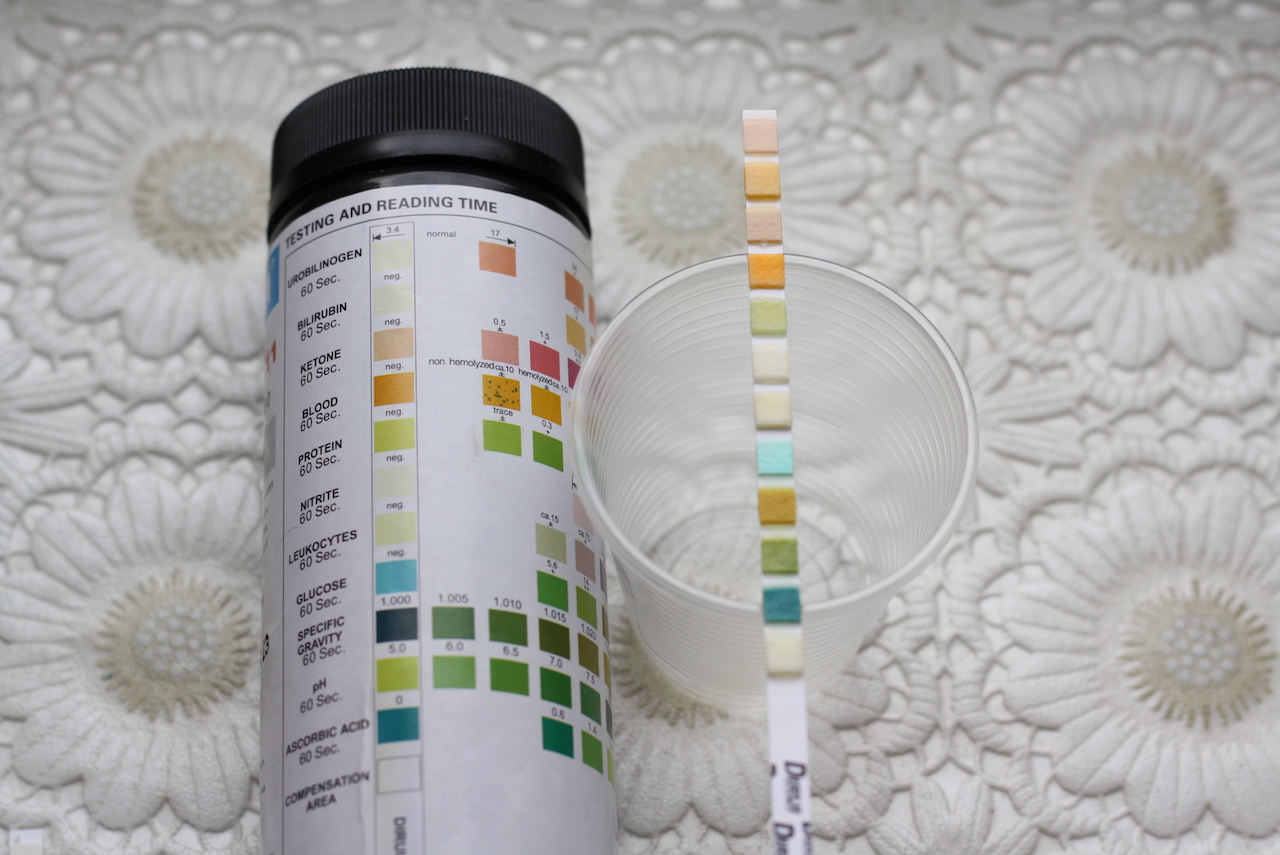
In short:
Relative density (SG). Norm - 1010-1023
An indicator for assessing the ability of the kidneys to concentrate urine, or to perform its main function, where 1023 is the minimum upper limit at which the kidneys are considered healthy. Result on test strips: 1020 - 1023 upon visual inspection .
Urine acidity (pH). Norm - 5.0-7.0
The indicator is often dictated by the diet, but with a systematic deviation from the norm should raise questions. A decrease in the indicator is typical for conditions of dehydration, prolonged fasting, diabetes mellitus. Higher numbers may indicate kidney failure or tumors of the genitourinary system. Result on test strips: up to 7 .
Protein (PRO). Norm - up to 0.033 g / l
Normally, a clinical analysis is not detected, but at the same time there can be both episodic and systematic increases. Occasional leaps can be associated with physical activity, work, stress. Chronic can indicate diseases of the urinary tract (cystitis, urethritis), tumors, pyelonifrit, etc. On the test strips - not found .
Urine glucose (GLU). There is no norm.
With glucose, everything is more or less clear. Most often, its presence in the urine indicates diabetes. However, the reasons for the appearance may be other - from overeating to heart attack. Test strips were not detected .
Ketone bodies (KET). There is no norm
Acetone and related substances most often indicate decompensated diabetes. In urine should not be detected. A distinguished concentration can also be manifested against the background of binges, with acute pancreatitis and in some other cases. Test strips - not detected .
Bilirubin (BIL). There is no
norm The norm is not determined, and any positive result may indicate irreversible disturbances in the liver, from viral hepatitis and cirrhosis to tumors.
On test strips - controversial value. They show the spread of the norm from negative to light orange (17), which can be read both as the norm and as “weak presence”.
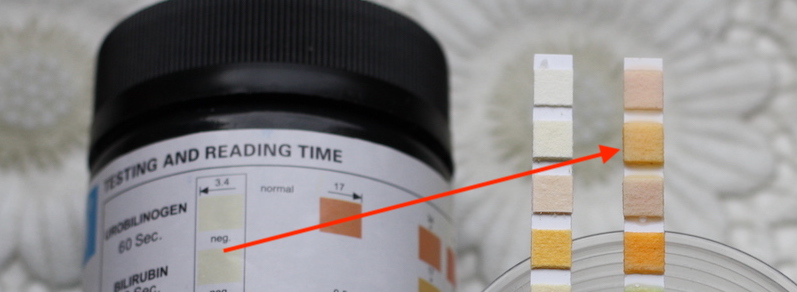
General clinical analysis was not found .
Urobilinogen (UBG). The norm is equal to 17 μol / l or less.
The bilirubin derivative should normally give a negative result. A positive analysis may indicate intravascular destruction of red blood cells. Urobilinogen also appears with resorption of hematomas, acute hepatitis, poisoning and liver tumors. It can be detected in various bowel diseases. Test strips - positive. Coincided with clinical analysis .
Nitrite (NIT). Norm - absent
Normally - absent. Most often, a positive analysis indicates the presence of any bacteria that cause inflammation. Test strips - negative.
Blood in urine (BLD). Norm - absent
You can determine a large amount by eye - urine will change color. A small amount is not always something dangerous: this may be a consequence of the consumption of berries, physical activity or stress. There are more dangerous pathologies: urinary tract infections, benign / malignant tumors, etc. Test strips - negative .
White blood cells in the urine (LEU). Norm - single values
Leukocytes are always in the urine, but most often they are single: in clinical practice they are limited to the range 0 - 5. Exceeding the norm can indicate cystitis, urethritis, prostatitis. It is also a laboratory sign of urolithiasis. Test strips are within normal limits .
Ascorbic acid (VC). Norma - present
Vitamin C is present in the body. So availability is the norm. Ascorbic acid may be more, maybe less. Actually, the analysis should confirm the presence within the normal range. Deviations can have different reasons. On test strips - present .
Comparison table: clinical analysis vs stripes
| Data | Test strips | Laboratory analysis |
| Glucose | Not | Not |
| Bilirubin | Visually within normal limits | Is absent |
| Bilinogen | Yes | Yes |
| Density | Visually from 1.025 - 1.030 | 1.029 |
| pH | Visually 6.5 | 6 |
| Ketones | not | not |
| Blood | Not | There is nothing to compare directly with |
| Protein | Not | Not |
| Nitrite | Not | Not |
| White blood cells | Fine | Fine |
| Vitamin C | Fine | There is nothing to compare directly with |
The accuracy and reproducibility of such test strips is quite high. In this case, it should be noted that. Most often, test strips are sold in packs of 50 and 100 pieces. This is quite a lot, even for a family. But in fact, as such, the actual shelf life is not in their power. Even expired - show reliable data. There is nothing special to spoil there. That is, this is because the thing is long-playing.
Speaking of price. Depending on the number of pieces in the package, from 50 to 100 - varies by half and the price is from 700 - to 1500 and above. The test strips we worked with cost 1,500 rubles , 100 pieces per pack.
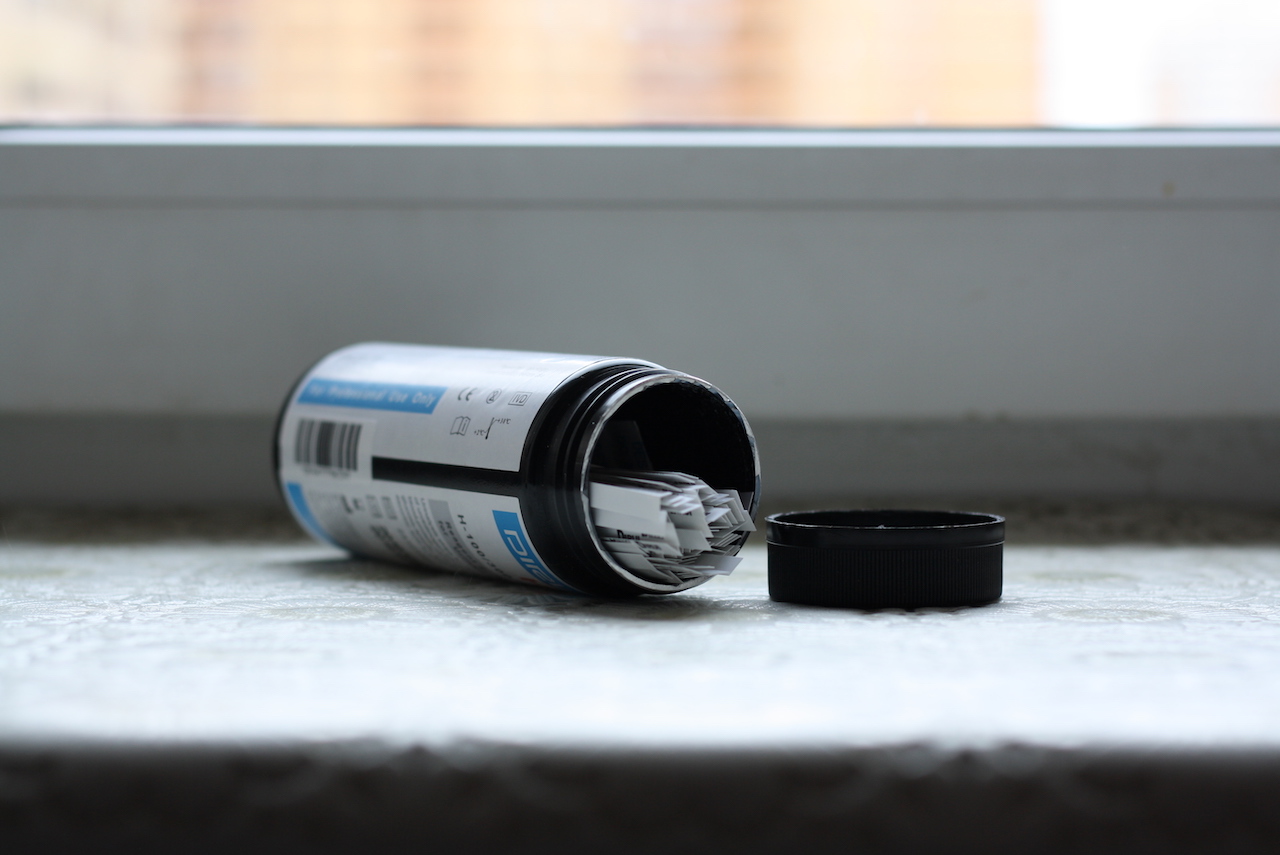
How often do you need to do this?
In general, from the point of view of “payback”, such a bank is quite profitable: the average cost of a general analysis in a private clinic is not high, but they still count 300-350 rubles for 1 analysis. A family of three to four will pay for it in five stripes.
What else to do with 96 and how often do you need to control the indicators? Strictly speaking, despite the fact that this is the most affordable and cheapest way to diagnose it, it is, of course, not useless. A general analysis can identify some diseases of the kidneys, liver, prostate diseases even at an asymptomatic stage:
General urine analysis:
- Diagnosis of kidney disease: nephritis, nephrosclerosis, amyloidosis, urolithiasis, tumors
- Diagnosis of pyelonephritis, diseases of the bladder, prostate gland
- Detection of early signs of disease
Usually assigned:
- The first visit to the doctor is a mandatory study, regardless of the diagnosis of the current or intended
- For diseases of the urinary tract
- With kidney disease
- As an annual routine inspection
- To assess the course of various diseases and evaluate the effectiveness of treatment
- After infectious diseases
In fact, not so often, however, having in the house something like designated test strips you can monitor the dynamics once a month. This is a prophylaxis from the “it won't be worse” series. There are also groups of users to whom such analysis can and should be submitted more often. For instance:
For monitoring after surgery, in patients with kidney stones during the prevention of re-stone formation, in pregnant women with the threat of infections, gestosis, in children with urinary-ureteral reflux, chronic pyelonephritis, with differential diagnosis, etc.At the same time, some of these patients may turn out to be partially mobile for all, for example, patients after operations, therefore, in a calm, stress-free mode, taking an analysis at home is one of the successful solutions.
In general, having such an instrument of self-control is not a stupid decision, and once or twice a month for three or four family members such a bank no longer seems "endless".
Pros and Cons
Of the minuses of any home introspection, self-medication seems to be the biggest. Here it is necessary to be able to draw correct and unhurried conclusions, to have a good doctor for consultations.
From the point of view of functionality, there are no negative pitfalls: the strips determine the indicators quite accurately, and if there are no problems with color discrimination, then you won’t draw any extra conclusions. But the human factor is, of course, always a minus: it didn’t light up, I looked at the wrong angle, but still the colors are quite contrasting. Those who do not trust themselves can once again look at the home analyzer from our review . In Russia, it costs 31,500 rubles , but this is more of a solution for clinics.
Strips are easily bent. This is important because urine collection containers most often have compact dimensions:

But from this point of view there will be no problems: the sample can be taken evenly and quickly, by slightly bending the strip. Of the pluses is a timely, quick result on key analyzed parameters with high accuracy. The main thing is to follow the instructions (they are in excess in the kit). The main thing is the shelf life of the material - no more than two hours, and the period of visual analysis - 60-120 seconds.
You can buy express strips for the general analysis of urine, including in our store. You can also use a coupon for a 5% discount: DIRUIH11 . Valid until the end of April or while the product is in stock.
Take care of yourself! And collect, if possible, a small family geek kit.
